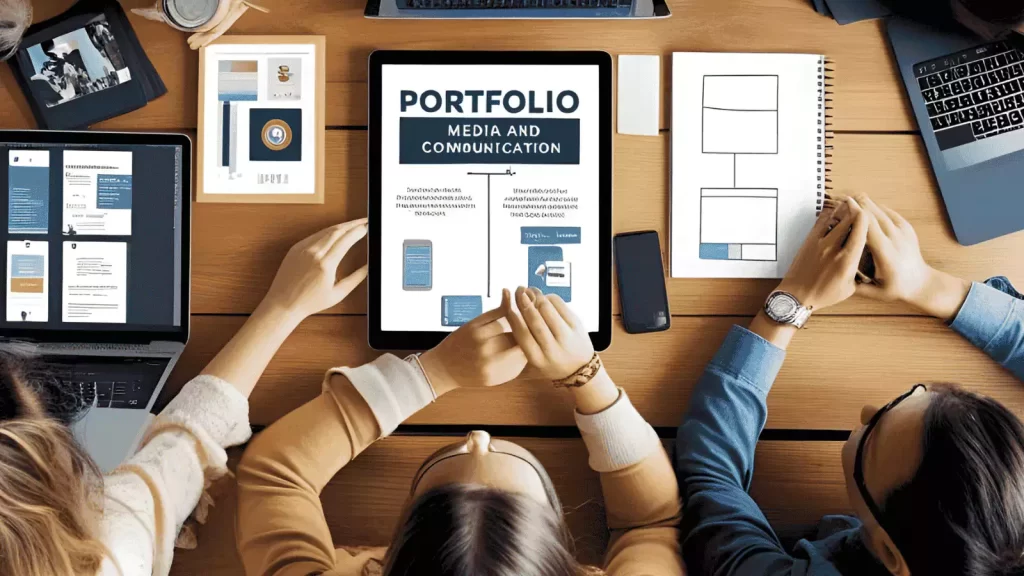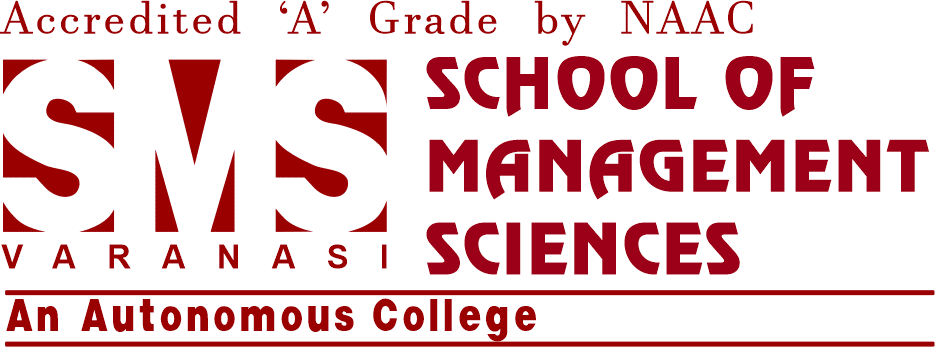In the ever-changing and competitive world of communication and media, developing a portfolio throughout your undergraduate years can serve as your platform to success. Your abilities, creativity, and adaptability are highlighted in a well-designed portfolio, which helps you stand out in an increasingly competitive marketplace. A thorough approach to creating a strong portfolio that complies with industry standards may be found here.
Understanding the Purpose of a Portfolio

There are several uses for a portfolio in the media and communication industry:
· Highlighting Skills: Your expertise in domains such as writing, design, video production, or public relations may be demonstrated in various manners.
· Showcasing Creativity: Originality and creativity are essential for jobs in media and communication, and your portfolio can prove that point.
· Demonstrating Versatility: Your capacity to adapt while doing well in a variety of assignments is demonstrated by a well-rounded portfolio.
· Making a First Impression: In order to set an environment for possible prospects, your portfolio is often looked at prior to an interview.
Start Early and Plan Strategically
Building your portfolio requires getting started early. During your time in college, you have access to chances, mentors, and resources that might not be as accessible after graduation. To make the most of them, you should be doing:
· Set Clear Goals: Recognize the communication and media careers which are appealing to you. Adapt your portfolio to your field, whether it is journalism, public relations, advertising, or digital content production.
· Seek Guidance: To make sure your portfolio meets the latest industry standards, consult with instructors, consultants, and business experts.
· Create a Timeline: Divide the process of creating a portfolio into achievable goals to guarantee continuous advancement.
Key Components of a Media and Communication Portfolio

Diverse components that showcase your interests and abilities should be included in a successful portfolio. Here’s what you should include:
1. Written Content
The basis of a profession in media and communication is strong writing. It includes:
· Articles and Blogs: Showcase your best work, encompassing a variety of subjects and styles.
· Press Releases: Emphasize your skill to produce material that is appealing and efficient.
· Academic Papers: Display your ability for investigation and analysis.
· Scripts: Provide examples of your creative writing, such as highlight or podcast scripts.
2. Visual Content
A key component of media and communication is visual storytelling. Look out for to:
· Graphic Design: Distribute infographics, posters, and branding materials you have made.
· Photography: Provide a selection of appealing photos, particularly if you have prior event or photojournalistic experience.
· Videography: Provide links to videos that you have directed, edited, or produced.
3. Digital Projects
In the current media environment, having digital abilities is essential. Show your:
· Social Media Campaigns: For websites like Instagram, Twitter, or LinkedIn, showcase your skill to produce interesting material.
· Website Design: Display your ability to design websites that are both aesthetically appealing and easy to use.
· Search Engine Optimization (SEO): Give instances of content that has been tailored for search engines (SEO) to increase visibility or ranks.
4. Collaborative Projects
Teamwork is frequently involved in communication and the media. Keep a record of your contributions to group initiatives, highlighting:
· Role: Give an explanation of your duties and how they helped the project succeed.
· Outcomes: Emphasize measurable outcomes, like higher participation or effective advertising.
5. Internship Work
Internships offer significant experience in the business. Include the following:
· Work Samples: Share any content that you produced or worked on while you were an intern.
· Testimonials: Ask for superiors’ recommendations and incorporate them.
· Reflections: Give a brief explanation of the knowledge you acquired and how they influenced your abilities.
Developing Portfolio Assets
1. Leverage College Opportunities
Make the most of the tools and resources your college has to offer:
· Student Publications: Make contributions to newspapers, magazines, or blogs.
· Media Labs: Please make use of college laboratories or studios to produce audio and video.
· Clubs and Societies: To obtain real-world experience, join organizations that deal with communication.
2. Take on Freelance Projects
You may make income and develop a portfolio via freelancing. Look out:
· Content Creation: Provide clients with services including writing, editing, and design.
· Social Media Management: Assist companies in establishing an online presence.
· Event Coverage: Cover events at the campus or in the community by contributing images, videos, or articles.
3. Participate in Competitions
Participating in competitions can help you demonstrate your abilities to a wider audience. Look for:
· Writing Contests: Take part in contests for journalism or essays.
· Film Festivals: Make a documentary or short film submission.
· Design Challenges: Attend competitions for branding or graphic design.
4. Upskill with Certifications
Your abilities and portfolio can be improved with certificates and short courses. Take into account:
· Creative Tools: Learn how to use programs like Canva, Final Cut Pro, and Adobe Creative Suite.
· Digital Marketing: Become certified in fields such as SEO or social media marketing.
· Analytics: Develop your knowledge of technologies such as social media insights or Google Analytics.
Presenting Your Portfolio
Your portfolio’s appearance is just as essential as its content. Aim for a format that is both professional and approachable:
1. Digital Portfolio
A digital portfolio is easy to distribute and has many uses. Make sure:
· Responsive Design: Both desktop and mobile devices should continue to be able to browse your portfolio.
· User-Friendly Navigation: Divide the content into distinct sections.
· Interactive Elements: Add animations, movies, or links that may be clicked.
· Consistent Branding: Make sure your layout, font, and color scheme are all consistent.
2. Physical Portfolio
A physical portfolio may leave a lasting impression in certain circumstances. Keep in mind that:
· Professional Binding: Choose a presentation that is well-structured and streamlined.
· Selective Content: Only the most relevant and excellent work should be included.
· Annotations: Give each piece context by including descriptions or subtitles.
3. Online Platforms
Use platforms that are widely used in the business world, like:
· Portfolio Websites: Use tools like Squarespace, WordPress, or Wix to create a specialized website.
· Social Media Profiles: To display your work, use Instagram, or LinkedIn.
· Video Channels: To make sharing videos easier, upload them to YouTube.
Refining and Updating Your Portfolio
As your abilities and experiences expand, so should your portfolio. Relevance is ensured by regular updates:
· Solicit Feedback: To improve your work, get feedback from peers, mentors, and industry experts.
· Replace Old Work: Add new, excellent material to your portfolio on a regular basis.
· Tailor for Opportunities: Make your portfolio different for each internship or job application.
· Track Achievements: Keep track of any awards, credentials, or accomplishments you make.
Showcasing Your Portfolio
When your portfolio is prepared, it’s time to share it in a strategic way:
· Networking Events: At industry gatherings, bring your physical portfolio or provide digital connections.
· Career Fairs: Show recruiters and possible employers your work.
· Job Applications: Incorporate links to your portfolio into cover letters and resumes.
· Social Media: Reach a wider audience by promoting your portfolio on trustworthy websites.
Conclusion
While in college, developing a portfolio for a job in media and communication is a proactive step in realizing your future goals. Your portfolio becomes an effective tool for landing internships, employment, and freelancing possibilities by demonstrating your abilities, innovative thinking, and adaptability. Begin early, maintain consistency, and keep in mind that you should adapt your portfolio to meet the demands and changes of the sector. You will make an identity for yourself in the competitive marketplace of media and communication if you put in the necessary time and effort.
Read Also – How Nutritional Awareness Can Transform Campus Cafeterias
How To Find Law Internships While Studying BA LLB?





